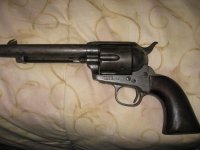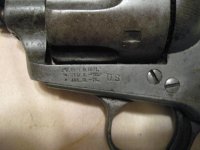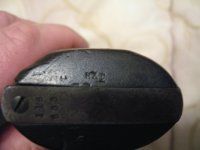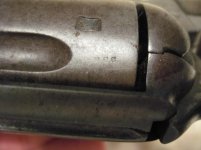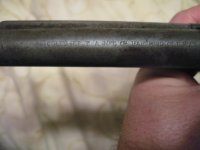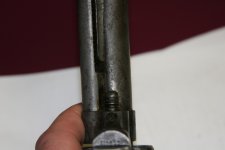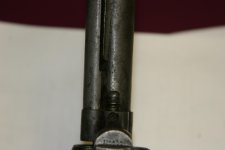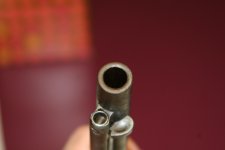Colt SAA 1873 Pics and info needed --MORE PICS ADDED NEAR BOTTOM
Hi all, A good friend of mine let me bring his Colt home. He is looking for info and approximate value on it. I have been able to determine from the serial number it was made in 1886, other than that I know little. Here are some pics. There are 2 sets of initials - the first is D.F.C which can barely be seen on the cylinder. The second is on the bottom of the wooden grips and they are RAC. I'm guessing since the last initial of both is C that stands for Colt and maybe is a family member that made that part but I really don't know. The serial number is stamped on each part and they do match. One other item, the front sight has a small groove or piece cut out of it and a small piece of ivory is installed, it can be seen on on picture. He believes that was done at the factory. The story is his Great Great Grandfather was issued this revolver and it has passed down thru the family. Thanks for any info.
Hi all, A good friend of mine let me bring his Colt home. He is looking for info and approximate value on it. I have been able to determine from the serial number it was made in 1886, other than that I know little. Here are some pics. There are 2 sets of initials - the first is D.F.C which can barely be seen on the cylinder. The second is on the bottom of the wooden grips and they are RAC. I'm guessing since the last initial of both is C that stands for Colt and maybe is a family member that made that part but I really don't know. The serial number is stamped on each part and they do match. One other item, the front sight has a small groove or piece cut out of it and a small piece of ivory is installed, it can be seen on on picture. He believes that was done at the factory. The story is his Great Great Grandfather was issued this revolver and it has passed down thru the family. Thanks for any info.
Attachments
Last edited:

